This Sunday, Alahalli Neighbourhood Lake Development Trust (ANLDT) felicitated B V Satish, Chief Engineer, BBMP (Lakes), who is retiring from service this month. He was instrumental in rejuvenating Alahalli-Anjanapura lake, among many other lakes in Bengaluru.
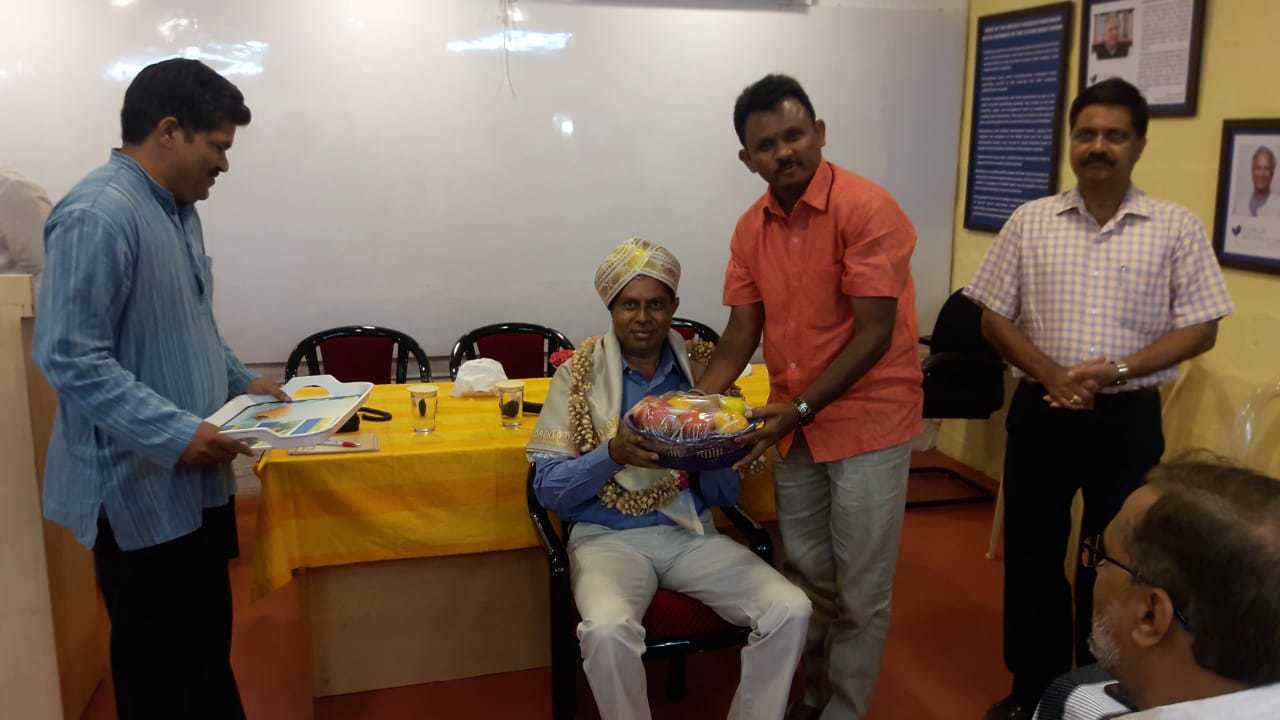
B V Satish, BBMP Chief Engineer (Lakes), was felicitated at the event. Pic: Anand Yadwad
Volunteers and neighbourhood residents attended the event, and took a walk around the lake. B V Satish, DCF S N Hegde, and Anjanpura ward corporator K Somashekar also participated in the walk.
ANLDT Chairman Suresh K Krishna, Treasurer Vinatha M Reddy, and other trustees, also attended the event.
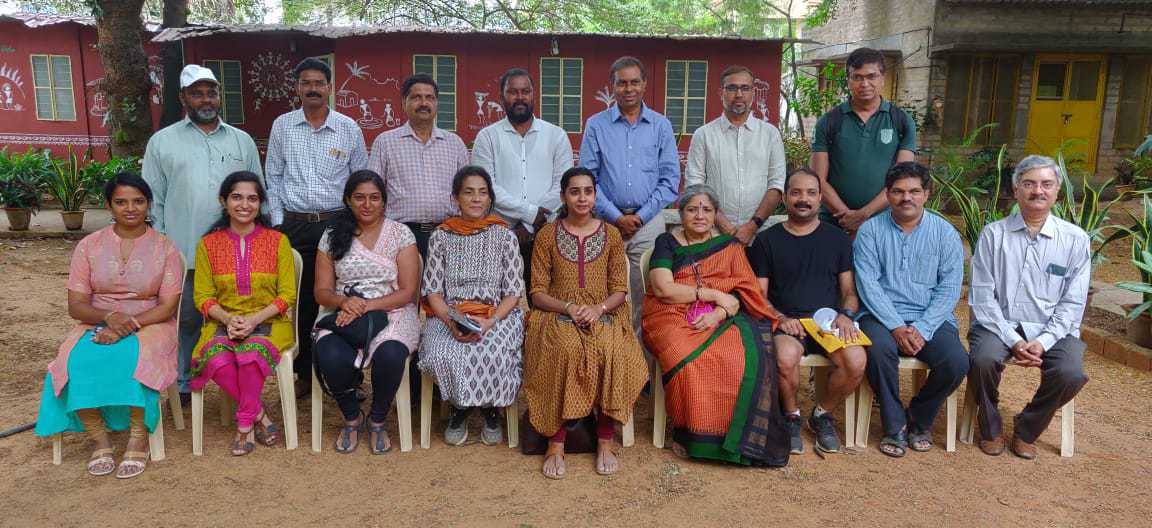
Officials and ANLDT members. Pic: Anand Yadwad
Cleaning efforts started years back
Alahalli lake, located in Anjanapura ward (196) in South Bengaluru, is spread across 23 acres. The lake was severely polluted by 2011, due to sewage inflow from a stormwater drain and from residential areas. Garbage dumping in the lakebed was also common. The problem had worsened with increased population in the area, and the lack of an underground drainage system.
By then, residents in the neighbourhood had got together to revive the lake; in 2013, we formed ANLDT. We started organising cleaning drives at the lake, in which volunteers from across the city participated. School students, corporate employees, volunteers living as far away as Marathahalli and Indiranagar, all participated in these efforts.
We also organised events such as bird watching, tree planting, cycle day, cultural activities like drawing competitions and music concerts at the lake premises. Hundreds of residents and volunteers were involved with the lake by then.
However, in our cleaning drives, we could only clear the black spots. We couldn’t prevent sewage from entering the lake, or deweed and desilt the lake.
Shuttling from one department to another
Over the years, we approached many authorities, requesting rejuvenation of the lake. We requested the BWSSB (Bangalore Water Supply and Sewerage Board) to divert sewage away from the lake, but the Board said it was helpless. Since this area had been newly added to the BBMP, it was not covered by BWSSB yet.
In 2013, 600 residents in the neighbourhood jointly submitted a petition to the BDA, requesting lake restoration. BDA was the custodian of the lake then. We also petitioned elected representatives, and met authorities like the State Pollution Control Board (KSPCB).
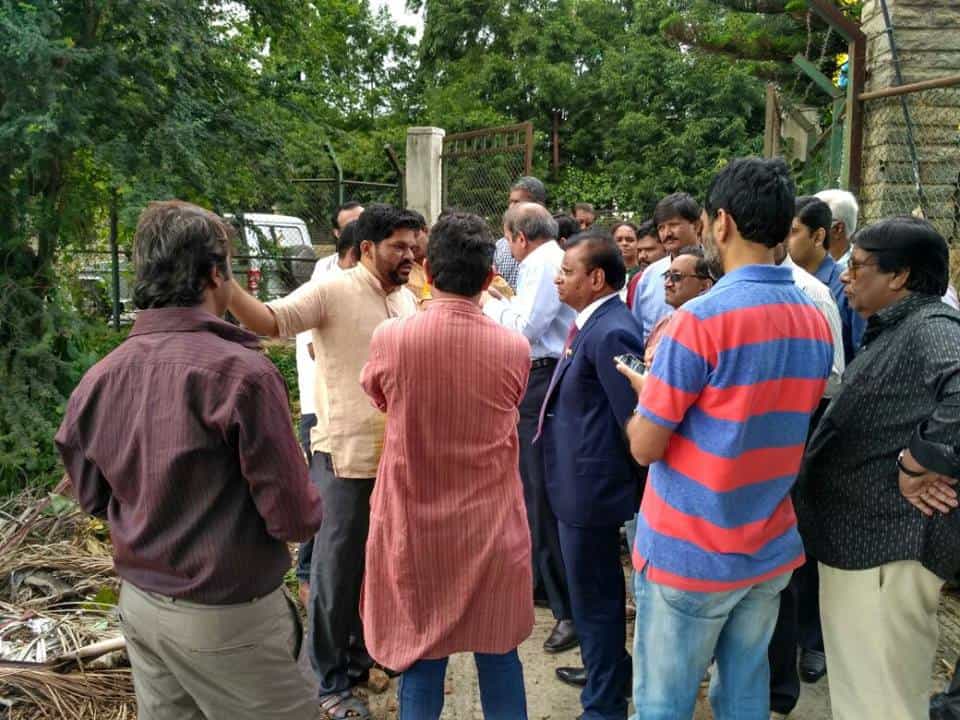
Volunteers meeting KSPCB officials at the lake in 2016. Pic: https://www.facebook.com/SaveAlahalliLake/
The BDA did float a tender for Rs 7.5 crores, but did not take up the work citing the issue of sewage inflow. BDA said it could not proceed with the works until BWSSB stopped sewage inflow. Eventually, the BDA tender went stale.
In 2016, the lake was transferred from BDA to BBMP. BBMP then granted us permission to clean the lake ourselves.
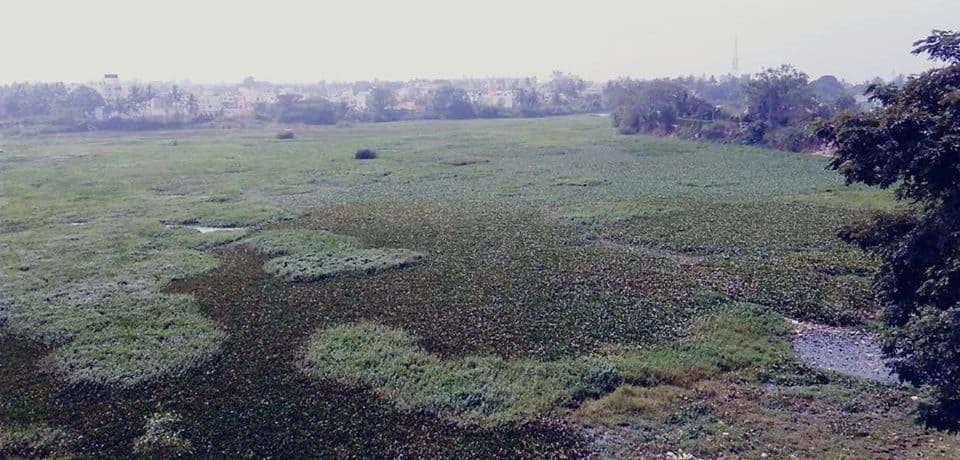
Alahalli lake in 2016, before the cleanup. Pic: https://www.facebook.com/SaveAlahalliLake/
In December 2016, we started a cleanup drive with the support of Pavithra Foundation, which provided the machinery to deweed the lake. Our corporator Somashekar helped by transporting huge mounds of weed that was removed from the lake. For the drive, we raised funds of around Rs 15 lakh from neighbourhood residents and from Promac Engineering Industries in Alahalli. The lake, which was polluted and covered with weeds, was largely cleared up after the three-month drive.
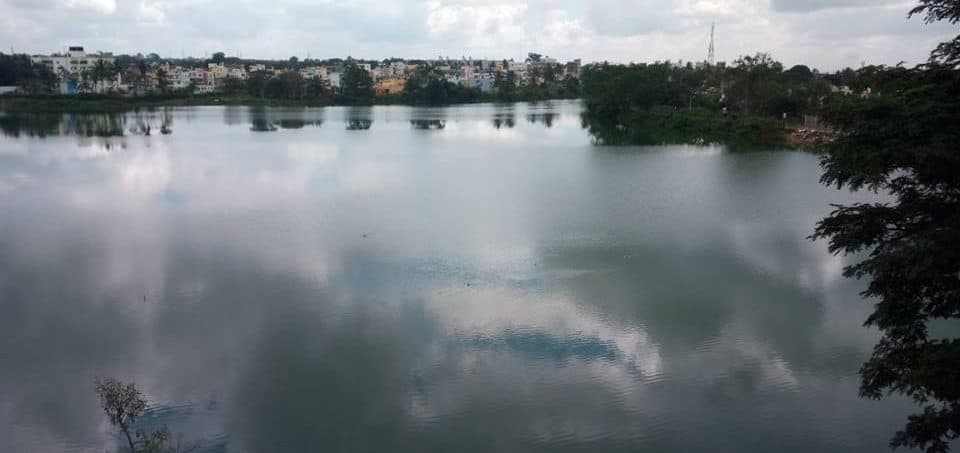
After the cleanup drive by ANLDT. Pic: https://www.facebook.com/SaveAlahalliLake/
With this, many migratory and native birds that were not visible here for years, started revisiting.
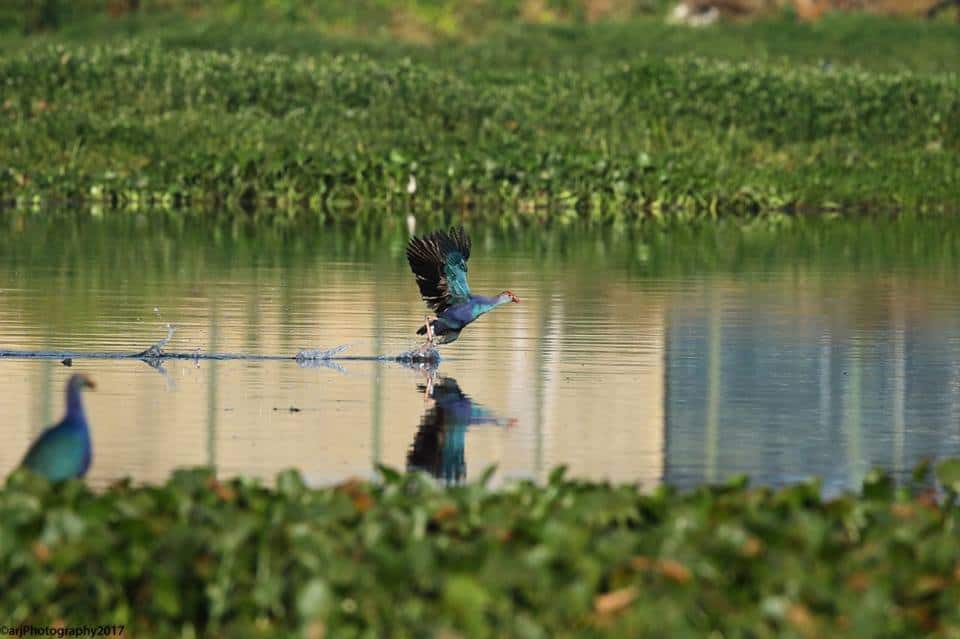
Birds starting to revisit the lake. Pic: https://www.facebook.com/SaveAlahalliLake/
But without desilting and stopping of sewage inflow, our efforts would go to waste.
Restoration at last!
Once the lake was with BBMP, Satish played a key role in allocating funds for the lake, and in floating tenders for lake restoration. Our volunteers also coordinated with officials across departments. One volunteer Santosh Ananthapura, especially, played a key role in getting the project started.
We met the then-Bengaluru in-charge Minister K J George, who supported our efforts. He directed us to M K Gunashekar, Chairman of BBMP’s Standing Committee for Tax and Finance, who was putting together the annual BBMP budget. As a result, in the BBMP budget, Rs 3 cr was allocated to divert sewage away from Alahalli lake. Also, the state government sanctioned another Rs 5 cr for restoration works. In March last year, state government approved the issue of work orders for the restoration.
Work started soon after. In May, water was drained out of the lake. It took about a month for the 30 million litres of water in the lake to be drained. After desilting, the lake’s capacity would increase to 100 million litres.
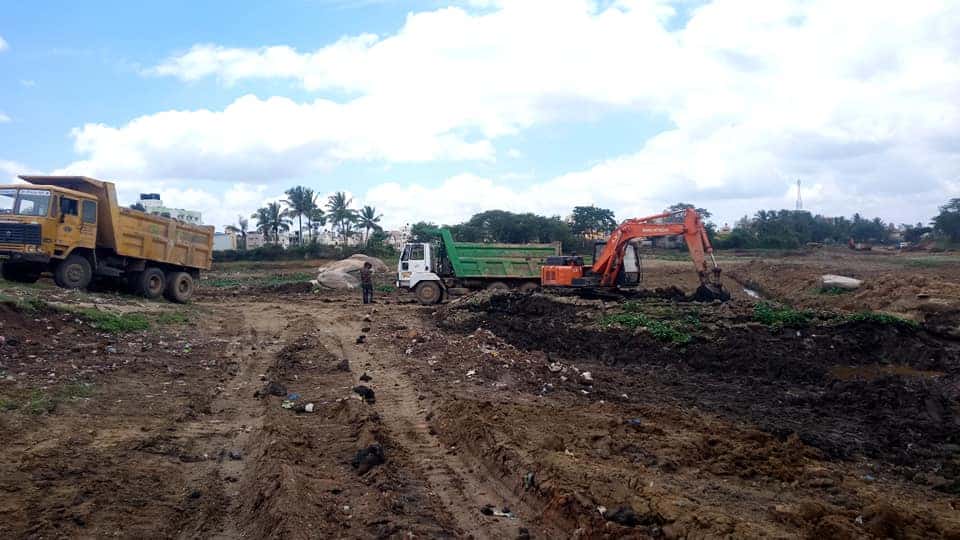
Restoration works at the lake. Pic: https://www.facebook.com/SaveAlahalliLake/
As part of the rejuvenation, a sewage diversion line has been constructed, an island built in the middle of the lake for birds to roost, along with a walking path around the lake. An STP (Sewage Treatment Plant) of 0.5 MLD capacity is planned to be built next year, with additional fund of Rs 6 cr from the state government. The works are being done by BBMP contractor Arunkumar, who is also restoring other lakes including Sarakki, Begur and Subramanyapura.
The lake bed has been desilted and levelled now, and there is no sewage entry anymore. BBMP is on the final phase of the works, beautifying the lake bund and building the walker’s track, yoga center, children’s play area, open gym and idol immersion pond. These are expected to be complete in another four months.
ANLDT’s priority now is to conserve the lake’s biodiversity, and we will soon sign an MoU with the BBMP for routine maintenance of the lake.
The lesson we learnt is that a crying baby gets the mother’s attention first, and that persistence pays off. BBMP and state government has an annual budget of around Rs 200 crore for lakes. With this budget, 10-15 lakes can be restored annually. At this rate, it will take 20-25 years for all 400 lakes in the city to be restored!
So, the more hue and cry one makes, quicker the mother (state government here) will rush to the rescue.
This story says Citizens does Matter!
In the midst of all the sad stories we tend to see in the news, these kind of inspiring movements make on not to lose hope in humanity. A people’s movement that has stood the test of the for over 6 years. Government officials that surprise you by their work ethics. Citizens who give and don’t take. Social groups that encourage each other towards a goal of the community. Congratulations to all those people who are part of this movement.
Congratulations to the group for their efforts in restoration of the lake.
Hope this type of efforts are taken by groups in other cities in the country.
Great to hear about the lake. Could the concerned people take action and desilt a water body opposite the Allalasandra Lake in Yelahanka that is being filled up. Looks like the land will be sold to some building construction company. The water body is next to the double road where Janapriya Heavens building is located. Opposite the government swimming pool.
Great work… We have to save bengaluru lakes for future.
Please could anything be done for Varthur lake. Area has become haven for mosquitoes.